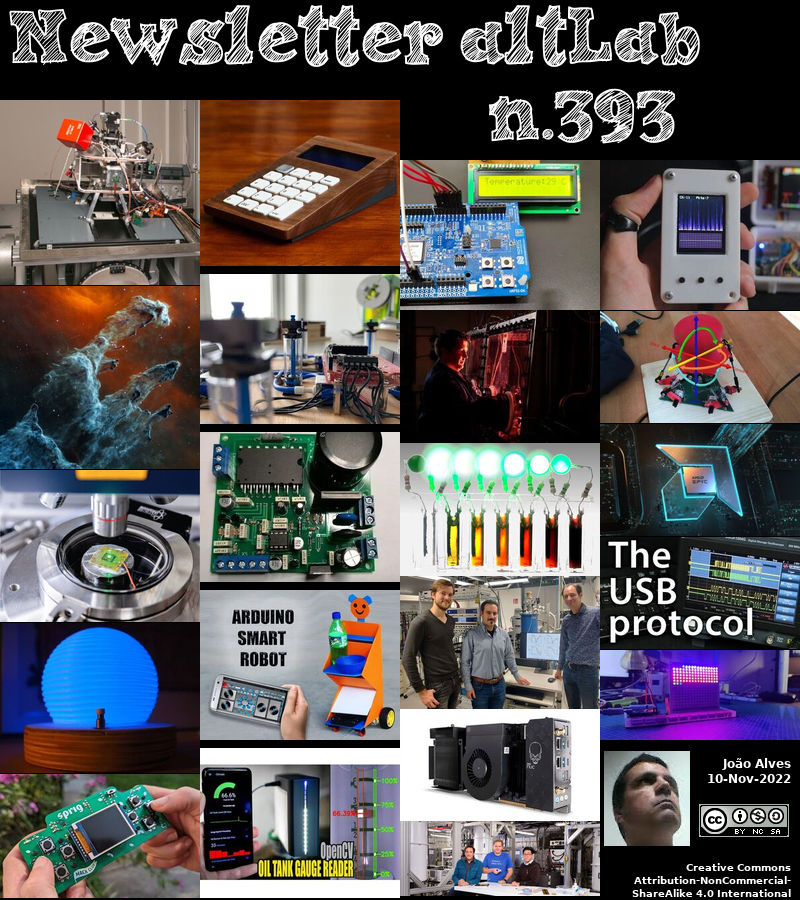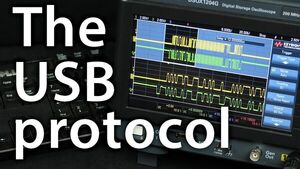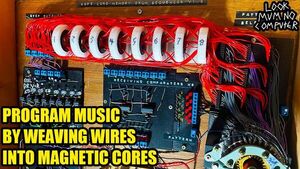2022-11-10 - Nº 393
Editorial
Esta é a Newsletter Nº 393 que se apresenta com o mesmo formato que as anteriores. Se gostar da Newsletter partilhe-a!
Todas as Newsletters encontram-se indexadas no link.
Esta Newsletter tem os seguintes tópicos:
Faz hoje anos que nascia, em 1764, o mineralogista hispano-americano Andrés Manuel del Río. Ele descobriu (1801) um novo elemento, mais tarde chamado vanadium. Enquanto professor de mineralogia no México, Del Rio examinou uma amostra de chumbo castanho de Zimapan e encontrou um novo metal, semelhante ao crómio e urânio, ao qual deu o nome de eritrónio, após a cor vermelha de um dos seus compostos químicos (eritrónio grego, "vermelho"). Foi dissuadido por outros químicos, e acabou por considerá-lo como crómio impuro. O químico sueco Nils Gabriel Sefström, redescobriu o elemento (1830) e deu-lhe o nome de vanádio, depois de Vanadis, a deusa escandinava da beleza, por causa dos seus belos compostos multicoloridos. Desde o início do século XIX, o vanádio tem sido utilizado como elemento de liga para aços e ferro.
Faz também hoje anos que nascia, em 1810, o engenheiro sanitário e canalizador inglês George Jennings. Ele inventou os primeiros autoclismos públicos. Jennings especializou-se na concepção de sanitários que fossem "o armário sanitário mais perfeito que se possa fazer". No entanto, também se destacou em projectos de saneamento público, tais como a concepção da "conveniência pública" subterrânea. As entradas para estes eram elaboradas grades metálicas e arcos iluminados por lâmpadas, com interiores construídos em ardósia e, mais tarde, em azulejos de cerâmica.
Faz igualmente hoje anos que nascia, em 1855, o fabricante automóvel francês Alexandre Darracq. Ele foi um dos primeiros a planear a produção em massa de veículos automóveis. Darracq começou a fabricar máquinas de costura e fundou a empresa Gladiator Cycle em 1891, fabricando as motocicletas Millet. Em finais da década de 1890, em França, recorreu aos automóveis. Mais tarde, Darracq fabricou carros eléctricos e bicicletas Millet motorizadas. Começou a produzir Léon Bollée voiturettes (1898), depois produziu automóveis de qualidade sob as marcas Darracq, Talbot-Darracq,e Talbot, nomeadamente a Darracq Flying Fifteen (1904). Também construiu automóveis de corrida e dirigiu uma escola para pilotos de corrida. Em 1904 Darracq foi o fabricante de automóveis de maior sucesso no mundo, produzindo 1600 veículos. A fábrica da filial italiana foi a origem da Alfa Romeo. Ele nunca aprendeu a conduzir.
Faz também hoje anos que nascia, em 1861, o astrónomo escocês Robert Innes. Ele descobriu Proxima Centauri (1915), a estrela mais próxima da Terra depois do Sol. Convidado por David Gill para o Observatório do Cabo, África do Sul (1894), tornou-se um observador binário bem sucedido com o refractor de 7 polegadas (1628 descobertas). A sua descoberta mais famosa, Proxima Centauri é uma estrela fraca perto da estrela binária Alfa Centauri, que está tão longe do sul que não é visível da maior parte do hemisfério norte. Foi também o primeiro a ver o cometa da luz do dia de 1910, embora este cometa tenha sido encontrado independentemente por tantas pessoas no hemisfério sul que nenhum "original" descobridor pôde ser nomeado. Innes registou-o a 17 de Janeiro de 1910.
Faz igualmente hoje anos que nascia, em 1895, o designer de aviões norte-americano Jack Northrop. Ele foi um dos primeiros defensores da construção totalmente metálica e do desenho das asas voadoras. Já em 1923, Jack Northrop tinha sido convencido de que a asa voadora, na qual a aeronave transportava todas as cargas e controlos dentro da asa e não tinha fuselagem nem secções de cauda, era o próximo grande passo em frente na concepção de aeronaves. Durante a Segunda Guerra Mundial, ele perseguiu vários projectos de aeronaves de asa voadora. Nas décadas que se seguiram à guerra, o nome de Northrop foi anexado como fabricante e projectista de várias outras aeronaves, culminando no B-2, que justificava o sonho de Jack Northrop de uma máquina voadora limpa.
Por fim, faz hoje anos que nascia, em 1918, o químico teórico alemão Ernst Otto Fischer. Ele foi co-recipiente (com o cientista britânico Geoffrey Wilkinson) do Prémio Nobel da Química em 1973 pela sua identificação de uma forma completamente nova em que os metais e as substâncias orgânicas se podem combinar. Fischer conheceu pela primeira vez o recém-sintetizado composto organometálico chamado ferroceno ao ler sobre o mesmo em 1951. Como nessa altura a sua estrutura era desconhecida, Fischer estudou-o, e determinou que consistia num único átomo de ferro ensanduichado entre dois anéis de carbono de cinco lados. Wilkinson fez esta mesma descoberta de forma independente de Fischer.
Em 1974, a descoberta da partícula subatómica "charmed quark" foi anunciada simultaneamente pelos dois grupos experimentais americanos responsáveis. Um era um grupo MIT no Laboratório Nacional de Brookhaven, e o outro um grupo SLAC-Berkeley na costa ocidental, no centro de aceleradores Linear de Stanford. A nova partícula, de massa 3095 MeV teve uma vida útil cerca de 1000 vezes mais longa do que a de outras partículas de massa comparável. Este anúncio incendiou o mundo da física de alta energia e é agora conhecido na comunidade da física como a revolução de Novembro. Em dois anos, em 1976, os cientistas que lideravam esses grupos, Samuel Ting e Burton Richter, receberam o Prémio Nobel da Física.
Em 1983, o estudante americano Fred Cohen apresentou num seminário de segurança os resultados do seu teste - o primeiro vírus documentado, criado como uma experiência em segurança informática. Cohen criou este primeiro vírus ao estudar para um doutoramento na Universidade da Califórnia do Sul. Outros tinham escrito sobre o potencial de criação de programas perniciosos, mas ele foi o primeiro a demonstrar um exemplo de trabalho. No jornal, ele definiu um vírus como "um programa que pode 'infectar' outros programas, modificando-os para incluir uma ... versão de si mesmo". Cohen adicionou o seu vírus a um programa gráfico chamado VD, escrito para um mini-computador Vax. O vírus escondeu-se dentro do VD e utilizou as permissões que os utilizadores tinham de olhar para outras partes do computador Vax para se espalharem pelo sistema.
Na Newsletter desta semana apresentamos diversas noticias, artigos científicos, projetos de maker e alguns vídeos interessantes.
 João Alves ([email protected])
João Alves ([email protected])
O conteúdo da Newsletter encontra-se sob a licença  Creative Commons Attribution-NonCommercial-ShareAlike 4.0 International License.
Creative Commons Attribution-NonCommercial-ShareAlike 4.0 International License.
Novidades da Semana
Outras Notícias
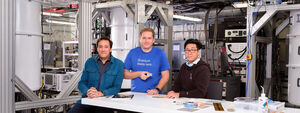
IBM Unveils 400 Qubit-Plus Quantum Processor and Next-Generation IBM Quantum System Two
"IBM (NYSE: IBM) today kicked off the IBM Quantum Summit 2022, announcing new breakthrough advancements in quantum hardware and software and outlining its pioneering vision for quantum-centric supercomputing. The annual IBM Quantum Summit showcases the company's broad quantum ecosystem of clients, partners and developers and their continued progress to bring useful quantum computing to the world. "The new 433 qubit 'Osprey' processor brings us a step closer to the point where quantum computers will be used to tackle previously unsolvable problems," said Dr. Darío Gil, Senior Vice President, IBM and Director of Research. "We are continuously scaling up and advancing our quantum technology across hardware, software and classical integration to meet the biggest challenges of our time, in conjunction with our partners and clients worldwide. This work will prove foundational for the coming era of quantum-centric supercomputing." ‘IBM Osprey’ - IBM’s new 433-quantum bit (qubit) processor IBM Osprey has the largest qubit count of any IBM quantum processor, more than tripling the 127 qubits on the IBM Eagle processor unveiled in 2021." [...]

Intel NUC 13 Extreme Sets New Standard for Gaming Performance
"Today, Intel launched the new Intel® NUC 13 Extreme Kit (code-named Raptor Canyon) and Intel NUC 13 Extreme Compute Element, which combine to make the most powerful Intel NUC ever built1. The NUC 13 Extreme features unlocked2 13th Gen Intel® Core™ desktop processors and space for new triple-slot, 12-inch graphics cards to unleash even more performance for enthusiast gamers and content creators. The Intel NUC 13 Extreme pairs an optimized thermal design with off-the-charts performance and never-before-seen features. The redesigned chassis optimizes airflow to reduce noise and throttling during intense gameplay and heavy workloads, all while maintaining the signature compact NUC footprint. About Its Minimalist Design, Massive Power: The modular Intel NUC 13 Extreme achieves incredible speed with up to a 13th Gen Intel® Core™ i9 desktop processor with eight Performance-cores (P-cores) and 16 Efficient-cores (E-cores), 32 threads and up to an incredible 5.8 GHz max turbo frequency. The NUC 13 Extreme includes all the additional features and connectivity gamers need, including: - Support for up to 64GB dual-channel DDR5-5600 MHz SODIMMs." [...]
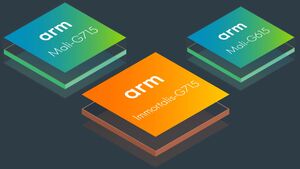
Bringing next-level 3D gaming to life with Arm Immortalis
"Over the past decade, Arm and its partners have significantly improved smartphone computing performance, delivering new capabilities and dramatically improving immersive visual experiences. We can enjoy enhanced mobile experiences with our friends, family and colleagues no matter where they are in the world. It’s the epitome of life in 3D, in real-time and it’s all in the palm of your hand. The launch of Arm’s 2022 Total Compute Solutions (TCS22) – which included Arm’s first ever flagship GPU, Immortalis-G715, and the new Cortex-X3 CPU – marked the delivery of the most power-efficient premium mobile experience and enabled the software ecosystem to deliver next-level visuals and longer game play. With the announcement of MediaTek’s Dimensity 9200 SoC, we’re marking another significant milestone with the first implementation of the full Arm TCS22 on TSMC 4nm. Further, it highlights MediaTek’s dual commitment to incredible performance and intelligent, power efficient design for the next generation of smartphones built on Dimensity 9200." [...]
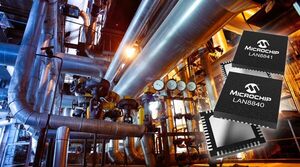
New Industrial Gigabit Ethernet Transceivers Offer Precision Timing Protocol to Optimize Process Automation Functionality
"Microchip’s LAN8840/41 are single-port Gigabit Ethernet transceivers delivering PTP-v2 (IEEE 1588-2008) time stamping for highly coordinated factory and process automation Developers of industrial automation systems are looking to shift away from the reliance on proprietary solutions for process synchronization to standard-based solutions that offer broader compatibility and reduce design costs. To deliver critical process synchronization, Microchip Technology Inc. (Nasdaq: MCHP) announces the LAN8840 and LAN8841 Gigabit Ethernet transceiver devices that meet IEEE® 1588v2 standards for Precision Timing Protocol. The LAN8840/41 Ethernet devices are enabled with Linux® drivers and deliver flexible Ethernet speed options including 10BASE-T, 10BASE-Te, 100BASE-TX and 1000BASE-T. The LAN8840/41 devices can facilitate critical packet prioritization by providing high-speed time stamping that is then relayed between the various components to determine network latencies, accommodate for those latencies, and synchronize time amongst all connected devices. This functionality is key for process automation applications that require precise control production systems such as robotics, distributed sensors and cooling and mixing systems. Designed with robust applications in mind, the LAN8840/41 devices can withstand extended industrial temperatures ranging from -40°C to +105°C." [...]
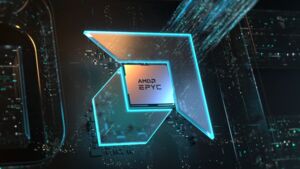
Offering Unmatched Performance, Leadership Energy Efficiency and Next-Generation Architecture, AMD Brings 4th Gen AMD EPYC™ Processors to The Modern Data Center
"Today, at the “together we advance_data centers” event, AMD (NASDAQ: AMD) announced the general availability of the 4th Gen AMD EPYC™ processors; with unmatched performance for critical workloads across cloud1, enterprise2 and high performance computing3. The 4th Gen AMD EPYC processors bring next-generation architecture, technology, and features to the modern data center. Built on the “Zen 4” core, the highest performance core ever from AMD4, the processors deliver leadership performance, energy efficiency5 and help customers accelerate data center modernization for greater application throughput and more actionable insights. “Choosing the right data center processor is more important than ever, and 4th Gen EPYC processors deliver leadership in every dimension,” said Dr. Lisa Su, Chair and CEO, AMD. “The data center represents the largest growth opportunity and most strategic priority for AMD, and we are committed to making AMD the partner of choice by offering the industry’s broadest portfolio of high-performance and adaptive computing engines. We have built the best data center CPU roadmap in the industry, and with 4th Gen EPYC we deliver another major step forward in performance and efficiency to make the best server processor roadmap even better." [...]
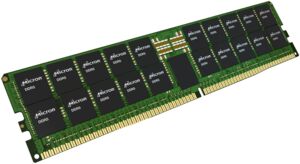
Micron DDR5 Memory Now Available for 4th Gen AMD EPYC Processors
"The combination scales up to 2X the performance for select HPC memory-bound workloads Micron Technology, Inc., (Nasdaq: MU) today announced availability of DDR5 memory for the data center that is validated for the new AMD EPYC™ 9004 Series processors. As modern servers pack more processing cores into CPUs, the memory bandwidth per CPU core has been decreasing. Micron DDR5 alleviates this bottleneck by providing higher bandwidth compared to previous generations, enabling increased reliability and scaling. The combination of 4th Gen AMD EPYC processors and Micron DDR5 delivers up to two times memory bandwidth on the STREAM benchmark and up to two times performance improvement on select HPC workloads such as computational fluid dynamics (OpenFOAM), Weather Research and Forecasting (WRF) modeling and CP2K molecular dynamics. “Micron continues to lead the industry transition to DDR5,” said Raj Hazra, senior vice president and general manager of Micron’s Compute and Networking Business Unit. “Algorithms that are increasingly memory-bound need far greater memory performance and reliability to extract insights from huge volumes of data." [...]

MediaTek Launches Flagship Dimensity 9200 Chipset for Incredible Performance and Unmatched Power Savings
"Newest addition to the Dimensity 5G series continues MediaTek’s history of flagship innovation. MediaTek today launched the Dimensity 9200, its latest 5G chipset powering the next era of flagship smartphones. Boasting extreme performance and intelligent power efficiency, the new SoC brings immersive all-day gaming experiences, ultra-sharp image capturing and support for both mmWave 5G and sub-6GHz connectivity to consumers around the globe. “MediaTek’s Dimensity 9200 combines ultimate performance with significant power savings, extending battery life and keeping smartphones cool,” said JC Hsu, Corporate Vice President and General Manager of MediaTek’s wireless communications business unit at MediaTek. “With notably brighter image capturing and improved gaming speeds, along with the latest display enhancements, the Dimensity 9200 will bring new possibilities for next-gen smartphones that come in a variety of stylish and foldable form factors.” The Dimensity 9200 is the first smartphone chip to integrate an Arm Cortex X3 with operating speeds over 3GHz, and the first featuring the Arm Immortalis-G715 GPU with a hardware-based ray tracing engine. The chipset also packs MediaTek’s HyperEngine 6.0 Gaming Technology for fast, fluid action so gamers can immerse themselves in every scene, in epic detail." [...]

Samsung Electronics Begins Mass Production of 8th-Gen Vertical NAND With Industry’s Highest Bit Density
"Samsung’s eighth-generation V-NAND features both the industry’s highest storage capacity and highest bit density to enable expanded storage space in next-generation servers Samsung Electronics, the world leader in advanced memory technology, as promised at Flash Memory Summit 2022 and Samsung Memory Tech Day 2022, announced today that it has begun mass producing a 1-terabit (Tb) triple-level cell (TLC) eighth-generation Vertical NAND (V-NAND) with the industry’s highest bit density. At 1Tb, the new V-NAND also features the highest storage capacity to date, enabling larger storage space in next-generation enterprise server systems worldwide. “As market demand for denser, greater-capacity storage pushes for higher V-NAND layer counts, Samsung has adopted its advanced 3D scaling technology to reduce surface area and height, while avoiding the cell-to-cell interference that normally occurs with scaling down,” said SungHoi Hur, Executive Vice President of Flash Product & Technology at Samsung Electronics. “Our eighth-generation V-NAND will help meet rapidly growing market demand and better position us to deliver more differentiated products and solutions, which will be at the very foundation of future storage innovations.” Samsung was able to attain the industry’s highest bit density by significantly enhancing the bit productivity per wafer. Based on the Toggle DDR 5.0 interface* — the latest NAND flash standard — Samsung’s eighth-generation V-NAND features an input and output (I/O) speed of up to 2.4 gigabits per second (Gbps), a 1.2X boost over the previous generation. This will enable the new V-NAND to accommodate the performance requirements of PCIe 4.0, and later, PCIe 5.0." [...]
Ciência e Tecnologia
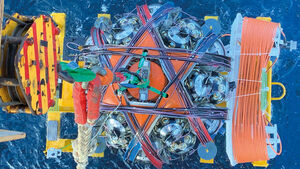
Neutrinos out of the blue
"More than 17,000 photomultipliers for KM3NeT are already transmitting data from the Mediterranean seabed, opening a new vista on the neutrino’s properties. Paschal Coyle, Antoine Kouchner and Gwenhaël De Wasseige take a deep dive. In the dark abysses of the Mediterranean Sea, what promises to be the world’s largest neutrino telescope, KM3NeT, is rapidly taking shape. Using transparent seawater as the detection medium, its large three-dimensional arrays of photosensors will instrument a volume of more than one cubic kilometre and detect the faint Cherenkov light induced by the passage of charged particles produced in nearby neutrino interactions. The main physics goals of KM3NeT are to detect high-energy cosmic neutrinos and identify their astrophysical origins, as well as to study the fundamental properties of the neutrino itself. KM3NeT (the Cubic Kilometre Neutrino Telescope) is the successor to the ANTARES neutrino telescope, which operated continuously from 2008 and has recently been decommissioned (see “The ANTARES legacy” panel)." [...]
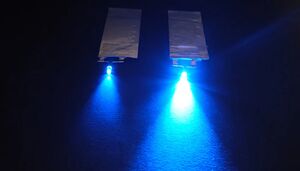
Max Planck spin-off develops more efficient batteries
"An invention by researchers at the Max Planck Institute for Medical Research could make batteries much more energy dense, efficient and safer. The research team has found a way to produce very fine metal fleeces, the batene fleece, that can serve as current collectors in batteries and make them more powerful. Batene GmbH, a spin-off of the institute, has licensed the technology through the Max Planck Society’s central technology transfer company, Max Planck Innovation, and is now marketing it. For this, the start-up is receiving initial funding of 10 million euros. Batteries are a key technology for the energy revolution: They can store electrical energy from renewable sources for times when photovoltaics and wind power do not supply electricity. And they make it possible to power vehicles in a climate-friendly way." [...]

Scientists discover exotic quantum state at room temperature
"For the first time, physicists have observed novel quantum effects in a topological insulator at room temperature. This finding opens up a new range of possibilities for the development of efficient quantum technologies, such as spin-based electronics, which may potentially replace many current electronic systems for higher energy efficiency. The breakthrough, published as the cover article of the October issue of Nature Materials, came when Princeton scientists explored a topological material based on the element bismuth. The scientists have used topological insulators to demonstrate quantum effects for more than a decade, but this experiment is the first time these effects have been observed at room temperature. Typically, inducing and observing quantum states in topological insulators requires temperatures around absolute zero, which is equal to minus 459 degrees Fahrenheit (or -273 degrees Celsius). In recent years, the study of topological states of matter has attracted considerable attention among physicists and engineers and is presently the focus of much international interest and research." [...]
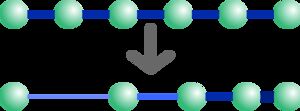
Synthetic black holes radiate like real ones
"Research led by the University of Amsterdam has demonstrated that elusive radiation coming from black holes can be studied by mimicking it in the lab. Black holes are the most extreme objects in the universe, packing so much mass into so little space that nothing – not even light – can escape their gravitational pull once it gets close enough. Understanding black holes is key to unravelling the most fundamental laws governing the cosmos, because they represent the limits of two of the best-tested theories of physics: the theory of general relativity, which describes gravity as resulting from the (large-scale) warping of spacetime by massive objects, and the theory of quantum mechanics, which describes physics at the smallest length scales. To fully describe black holes, we would need to stitch these two theories together and form a theory of quantum gravity. Radiating black holes To achieve this goal, we might want to look at what manages to escape from black holes, rather than what gets swallowed. The event horizon is an intangible boundary around each black hole, beyond which there is no way of getting out." [...]
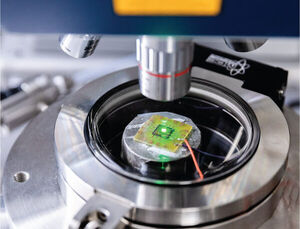
Smarter sensor sniffs out target gases
"Resonating silicon microbeams sense temperature shifts induced by airborne molecules. A chemical sensor endowed with artificial intelligence can learn to detect certain gases in the air with high sensitivity and selectivity. The device, developed at KAUST, uses machine learning to differentiate the gases according to the way they induce slight temperature changes in the sensor as they interact with it. Smart electronic sensors that can detect specific airborne molecules are in great demand for use in applications from medical diagnostics to the detection of dangerous industrial gas leaks. The challenge is to accurately detect the target gas among the complex mixture of chemicals typically found in the air, says Usman Yaqoob, a postdoc in the labs of Mohammad Younis, who led the research. “Existing sensing technologies still suffer from cross-sensitivity,” Yaqoob says." [...]

New materials could enable longer-lasting implantable batteries
"Pacemakers and other medical devices, as well as long-distance drones and remote sensors, could require fewer battery replacements with new approach. For the last few decades, battery research has largely focused on rechargeable lithium-ion batteries, which are used in everything from electric cars to portable electronics and have improved dramatically in terms of affordability and capacity. But nonrechargeable batteries have seen little improvement during that time, despite their crucial role in many important uses such as implantable medical devices like pacemakers. Now, researchers at MIT have come up with a way to improve the energy density of these nonrechargeable, or “primary,” batteries. They say it could enable up to a 50 percent increase in useful lifetime, or a corresponding decrease in size and weight for a given amount of power or energy capacity, while also improving safety, with little or no increase in cost. The new findings, which involve substituting the conventionally inactive battery electrolyte with a material that is active for energy delivery, are reported today in the journal Proceedings of the National Academy of Sciences, in a paper by MIT Kavanaugh Postdoctoral Fellow Haining Gao, graduate student Alejandro Sevilla, associate professor of mechanical engineering Betar Gallant, and four others at MIT and Caltech." [...]

Integrating Robotics, Materials Science to Capture Solar Energy
"Solar energy is key to combating climate change, but harnessing it is difficult. In current solar panels, only 20% of available energy is typically transformed into electricity. An NC State professor is leading the development of more effective solar panels cells so that this renewable energy source can replace dwindling fossil fuels. At the same time, this work is establishing more accessible ways to do research in science, technology, engineering and mathematic fields. In the 2010s, Aram Amassian, a professor in the Department of Materials Science and Engineering, pioneered new processes through which to coat materials using inks. These in situ experiments allow researchers to collect data about the function of the ink during its fabrication as opposed to after it has formed." [...]

MIT engineers develop a low-cost terahertz camera
"The device provides greater sensitivity and speed than previous versions, and could be used for industrial inspection, airport security, and communications. Terahertz radiation, whose wavelengths lie between those of microwaves and visible light, can penetrate many nonmetallic materials and detect signatures of certain molecules. These handy qualities could lend themselves to a wide array of applications, including airport security scanning, industrial quality control, astrophysical observations, nondestructive characterization of materials, and wireless communications with higher bandwidth than current cellphone bands. However, designing devices to detect and make images from terahertz waves has been challenging, and most existing terahertz devices are expensive, slow, bulky, and require vacuum systems and extremely low temperatures. Now, researchers at MIT, the University of Minnesota, and Samsung have developed a new kind of camera that can detect terahertz pulses rapidly, with high sensitivity, and at room temperature and pressure. What’s more, it can simultaneously capture information about the orientation, or “polarization,” of the waves in real-time, which existing devices cannot." [...]

Structural Determination of Complex Anion Materials by an Interdisciplinary Approach
"Researchers decode the complex ordering of fluorine atoms in lead titanium oxyfluoride using computational and experimental techniques A variety of material properties can be realized by a composite anion technology in which a part of the oxygen in the oxide solid is replaced with another element such as fluorine. Researchers have now developed an interdisciplinary approach to demonstrate the complex mechanism of ionic ordering in complex composite structures. Using density functional theory and nuclear magnetic resonance, the researchers determined the energetically favorable occupational sites of fluorine atoms in lead titanium oxyfluoride. Solid-state materials are widely used in semiconductors, phosphors, and batteries, and have become an indispensable part of modern life. Substitution of elements in these complex composite materials is a popular technique to achieve desired material properties. Especially, various properties can be achieved by partially replacing oxygen in the oxide solid with another element such as fluorine (composite anion technology)." [...]

Ensuring AI works with the right dose of curiosity
"Researchers make headway in solving a longstanding problem of balancing curious “exploration” versus “exploitation” of known pathways in reinforcement learning. It’s a dilemma as old as time. Friday night has rolled around, and you’re trying to pick a restaurant for dinner. Should you visit your most beloved watering hole or try a new establishment, in the hopes of discovering something superior? Potentially, but that curiosity comes with a risk: If you explore the new option, the food could be worse. On the flip side, if you stick with what you know works well, you won't grow out of your narrow pathway." [...]
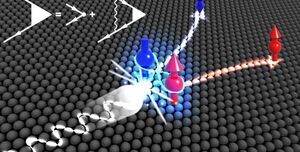
New Theory of Electron Spin to Aid Quantum Devices
"Electrons—those little subatomic particles that help make up the atoms in our bodies and the electricity flowing through your phone or computer right now—have some properties like mass and charge that will be familiar to anyone who has taken a high school physics class. But electrons also have a more abstract property known as spin, which describes how they interact with magnetic fields. Electron spin is of particular importance to a field of research called spintronics, which aims to develop quantum electronic devices that use spin in memory storage and information processing. Spin is also central to qubits—the basic unit of information used in quantum computing. The problem with using spin in these quantum devices is that its quantum states can be easily disrupted. To be used in a device, the electron spins need to preserve their quantum state for as long as possible to avoid loss of information." [...]
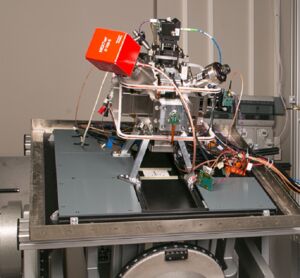
Quantum sensors for GPS-free orientation
"How can we navigate airliners or allow military vehicles to stay on course without GPS or satellite signals? This is a problem for which quantum inertial sensors offer a solution. Harnessing quantum technology, they can take ultrasensitive measurements of acceleration in three dimensions, and in any orientation. However, the ideal inertial sensor for navigation must, on the one hand, emit signals continuously at a high rate, and on the other, remain precise and sensitive over extended periods. Classic inertial sensors do meet the first criterion, but they err over time. Conversely, quantum sensors are extremely precise and sensitive, but measures are accompanied by dead time." [...]

Faster and more Efficient Computer Chips Thanks to Germanium
"TU Wien (Vienna) has succeeded in making a new type of material usable for chip technology. This enables faster, more efficient computers and new types of quantum devices. Our current chip technology is largely based on silicon. Only in very special components a small amount of germanium is added. But there are good reasons to use higher germanium contents in the future: The compound semiconductor silicon-germanium has decisive advantages over today's silicon technology in terms of energy efficiency and achievable clock frequencies. The main problem here is to establish contacts between metal and semiconductor on a nanoscale in a reliable way." [...]

How MIRI became Webb’s coolest instrument
"The NASA/ESA/CSA James Webb Space Telescope is widely referred to as the successor to the NASA/ESA Hubble Space Telescope. In reality, it is the successor to a lot more than that. With the inclusion of the Mid-InfraRed Instrument (MIRI), Webb also became a successor to infrared space telescopes such as ESA’s Infrared Space Observatory (ISO) and NASA’s Spitzer Space Telescope. At mid-infrared wavelengths, the Universe is a very different place from the one we are used to seeing with our eyes. Stretching from 3 to 30 micrometres, mid-infrared reveals celestial objects with temperatures of 30 to 700ºC. In this regime, objects that appear dark in visible light images now shine brightly." [...]
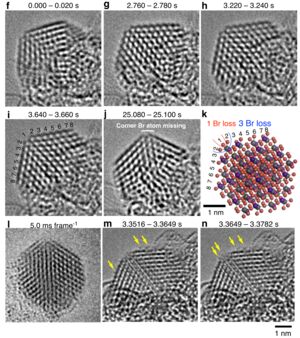
Out of the blue - New blue quantum dot technology could lead to more energy-efficient displays
"Quantum dots are nanoscale crystals capable of emitting light of different colors. Display devices based on quantum dots promise greater power efficiency, brightness and color purity than previous generations of displays. Of the three colors typically required to display full color images -- red, green and blue -- the last has proved difficult to produce. A new method based on self-organizing chemical structures offers a solution, and a cutting-edge imaging technique to visualize these novel blue quantum dots proved essential to their creation and analysis. Peer closely at the screen of your device, and you might be able to see the individual picture elements, pixels, that make up the image. Pixels can appear almost any color, but they are not actually the smallest element on your screen as they are typically made up of subpixels which are red, green and blue." [...]
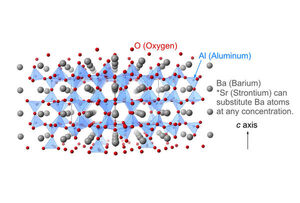
New quantum phase discovered for developing hybrid materials
"If you have ever watched water freeze to ice, you have witnessed what physicists call a "phase transition." Osaka Metropolitan University scientists have discovered an unprecedented phase transition during which crystals achieve amorphous characteristics while retaining their crystalline properties. Their findings contribute to developing hybrid materials for use in harsh environments, such as outer space. The results were published in Physical Review B. A typical phase transition exhibited by crystalline solids involves a change in the crystal structure. Such structural phase transitions usually occur at finite temperatures." [...]
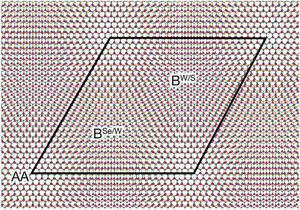
New Quasiparticle Discovered In Moiré Patterns
"If you hold one wire mesh on top of another one and look through it, you'll see a larger pattern called a moiré pattern formed by the overlapping grids of the two meshes, which depends on their relative twisted angle. Scientists developing new materials are actively studying moiré patterns in overlapping atomically thin materials -- they produce intriguing electronic phenomena that includes unconventional superconductivity and ferromagnetism. Supercomputer simulations have helped scientists reveal in a bilayer moiré system a new species of an electronic phenomenon called an exciton, which is an electrically neutral quasiparticle, yet one that can carry energy and consists of an electron and electron 'hole' that can be created for example by light impinging certain semiconductors and other materials. The newly discovered excitons were produced by moiré patterns from two-dimensional sheets of exotic semiconductors called transition metal dichalcogenides, with the electron bound to the hole but separated from each other by a characteristic distance in the sheet. This was named an intralayer charge-transfer exciton and was a surprise to the scientists because such excitons do not exist in the individual sheets. The research can be used in the development of new optical sensors and communication technology such as optical fibers and lasers." [...]
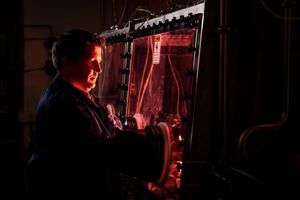
BYU profs create new micro nuclear reactor to produce nuclear energy more safely
"A nuclear power plant produces 8000 times more power than fossil fuels and is environmentally friendly, but when accidents do occur, they have major repercussions, such as the 1986 Chernobyl disaster. Nearly 100 people died either in the accident or through radiation sickness in the years following. BYU professor and nuclear engineering expert Matthew Memmott and his colleagues have designed a new system for safer nuclear energy production: a molten salt micro-nuclear reactor that may solve all of these problems and more. The standard nuclear reactor used in America is the Light-Water Reactor. Uranium atoms are split to create energy, and the products left over will radiate massive amounts of heat. They are kept in solid fuel rods, and water is run through the rods to keep everything cool enough." [...]
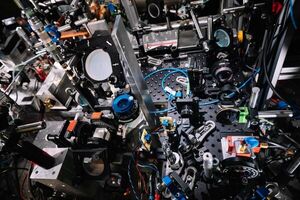
Magnetic Quantum Fluid: Extremely Fluid In Two Ways
"HEIDELBERG PHYSICISTS DEMONSTRATE THE COEXISTENCE OF SUPERFLUIDS IN ULTRACOLD ATOMIC CLOUDS Two superfluids can exist at the same time in ultracold atomic clouds. Until now, their coexistence could not be observed experimentally. Now, however, physicists from Heidelberg University have demonstrated such a magnetic quantum fluid – it is fluid in two ways – in an atomic gas. Researchers led by Prof. Dr Markus Oberthaler have succeeded in preparing this state in clouds of ultracold rubidium atoms and to characterise it in detail. The results of their research were published in the journal “Nature Physics”. Fluids as we know them from daily life do not flow without resistance." [...]
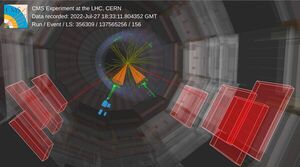
First Run 3 physics result by CMS
"On 5 July, the LHC roared to life for its third run after three years of continual improvements to the machine as well as to the experiments’ detectors and analysis tools, and immediately reached a record energy of 13.6 TeV. Just three weeks later, the CMS collaboration was ready for its physics data-taking period. The CMS collaboration recently presented its first Run 3 physics results of the production rate of pairs of the heaviest elementary particle, the top quark. In just one week, from 28 July to 3 August, the CMS collaboration collected data equivalent to almost 12% of the data set that had been required for the Higgs boson discovery in 2012. Before Run 3 began, it was hoped – and has now been confirmed — that it would be possible to gather such a vast amount of data in a very short time. It took physicists two years to collect the data used to announce the Higgs boson discovery in 2012." [...]
Projetos Maker
Diversos Projetos interessantes.
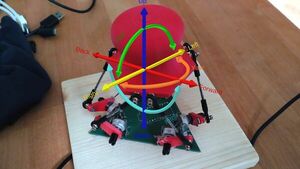
SpaceFox
"A 6DOF DIY HID. A what? A 6 degrees of freedom, do it yourself, human interface device. In other words, a 3D mouse, or an open hardware SpaceNavigator. You know, one of these thingies CAD designers use to zoom around. All the existing DIY designs out there I could find are not actually 6DOF." [...]

Single phase asynchronous motors VFD mini Inverter
"VFD scalar inverter for single phase asynchronous motors (max 500W). The name is MST_K05VF SINGLE PHASE ASYNCRONUS MOTOR VFD INVERTER For applications with low power asynchronous motors, an inverter has been designed with the initials MST_K05VF. This is a VFD mini inverter with which you can regulate all asynchronous motors with powers up to 500W (just over 0.5Hp). It is particularly suitable for controlling fan motors (axial and tangential), pillar drills, asynchronous washing machine motors (old style). The regulation is of the scalar type with the V / F technique: the frequency F and the amplitude V of the power supply sinusoid are varied, keeping their ratio constant in order to keep the stator flux constant and therefore the torque of the motor. The architecture of the inverter is the same as that of the MST_KVF inverter." [...]
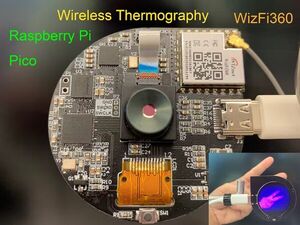
Raspberry Pi Pico & WizFi360 Wireless Thermography
"Raspberry Pi Pico & WizFi360 Wireless Thermography Solution, This project use RP2040 WizFi360 GC9A01. Display on PC and Screen. " [...]
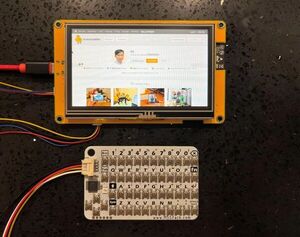
Arduino Thin Client
"This instructables show how to build an Thin Client with a WiFi capable Arduino dev board, e.g. ESP32 or Raspberry Pi Pico W. Supplies Any network capable Arduino dev device, with touchscreen display is preferred. What Is Thin Client? Thin Client is an minimalistic hardware that provide a user interface connect the user to the actual processing machine. E.g. using a low cost laptop remote (VNC/RDP) to a Windows server, the laptop is a Thin Client." [...]
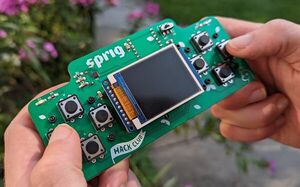
Sprig
"Sprig is a game console where every user is a creator. It can only be obtained by building a tile-based game in the web-based game editor and shipping it in the community gallery. It's made by Hack Club. You should be able to get started in Sprig with very little programming experience. Even if you're an expert, you should still be able to have fun. Sprig games are designed to be shared and hacked on with friends." [...]
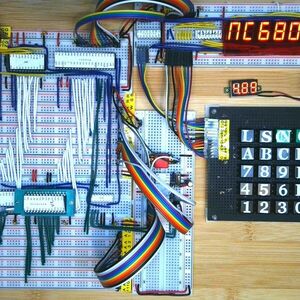
Nanocomp 6809 8 Bit Retro Computer on Breadboards
"Wireless World Magazine in January and June 1981 published this design. Reproduced on solderless breadboards using the original Monitor ROM The Nanocomp 6809 was a simple microcomputer design published in Wireless World magazine in 1981, with a 25 key keypad and 6 digit 7 Segment LED display. I built a version of this using PCBs and wire wrap in 1981. Now re-built using the original Monitor ROM on solderless breadboards. See step by step progress of the project on the Nanocomp Playlist https://youtube.com/playlist?list=PL0HI91x0gPoGBl-kXYaOYuHD8poIxmHG3. The Wireless World Nanocomp 6809 project was published in July 1981." [...]
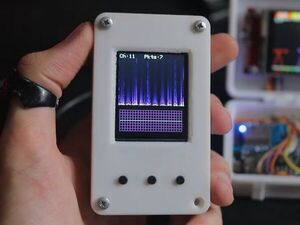
WiFiBOX - Packet Monitor with Waterfall Plot using ESP32
"Packet Monitor with Waterfall Plot using ESP32 The traffic values in the channel specified from 1 to 14 are received and displayed with the help of ESP32, and TFT Lcd. graphically in the form of incoming traffic at any time will show with Waterfall Plot. Features - Scan 2.4Ghz band - Received Packets will show with Waterfall Plot. - Ability to choose the desired channel from 14 channels Getting Started We use st7735 Tft Lcd with ESP32. Also, I used a MicroSwitch in order to change 802.11 channels. - TFT Lcd st7735 - ESP32 - Micro Switch" [...]

Arduino Home Maker Robot
"I have made an Arduino Robot for house hold activities. This one can deliver any items from one place to another Here in this instructable, I have made an Arduino Robot for house hold activities. This one can deliver any items like food, medicines, water, cell phone. clothes and many more things for one place to another. This is useful for those who work alone and have to manage the whole things in a short period of time. To make it simple, I have made it small in size and light in weight." [...]

Zeal 8-bit OS
"What? Zeal 8-bit OS is an operating system written entirely in Z80 assembly for Z80 computers. It has been designed around simplicity and portability. It is inspired by Linux and CP/M. It has the concept of drivers and disks, while being ROM-able. Why?" [...]

Drive a pneumatic system using a single chip
"Driving 9 solenoid valves and a DC compressor using the Infineon TLE94112ES 12-fold half-bridge Shield for Arduino. Do more with less! - pneumatic systems The first part of our "Do more with less!" mini-series is all about pneumatics. Pneumatic systems are great solutions, especially when a fast linear actuator is needed!The system setup is quite easy. All you need is - a compressor - an air tank - a valve (mechanic or mechatronic) - an actor (such as a cylinder) and you are ready to rock." [...]
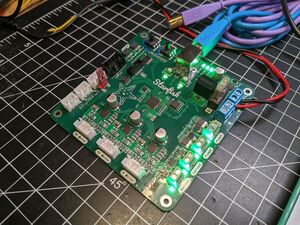
Creating a pick and place control board with the RP2040
"This article will explore the hardware design of Starfish, a control board for a pick and place machine built around the Raspberry Pi RP2040 microcontroller and Trinamic TMC2209 motor drivers. This control board shares some similarities with 3D printer control boards but it has some unique problems to solve- including controling solenoids and talking to vacuum sensors. I'll take you through the background, schematics, and layout, along with the decisions made. Starfish is open source, so you can check out the original source files on GitHub. " [...]

IR Remote Tester and Decoder
"In this tutorial, I am going to show you guys how to create a simple InfraRed Receiver / Tester Circuit using TSOP4838 Intro What do you generally do when your remote controls starts playing up? - Do you generally use a multimeter and check the voltage and current produced by the battery? - Or do you point the remote control to a digital camera and try to visualize the infrared light? In this video, I am going to show you guys how to create a simple InfraRed(IR) Receiver Circuit using TSOP4838 and will also show you how to read the code send by the remote controls. You can also use this circuit as an IR remote tester. " [...]

Temperature Measuring Without Any Sensors In NRF52832
"You can measure the temperature without any external temperature sensor, for measuring the temperature all you need is only nrf52832. When you want to measure the temperature of the surroundings while developing Bluetooth low-energy projects you require an external temperature sensor. implementing external sensors increases the BOM Cost and requires a bit more space. you can avoid these problems by using NRF52832 for your BLE Projects. in this project, I am measuring the temperature using NRF52DK And displaying the temperature on the LCD Display. for developing the firmware I have used the Arm Mbed." [...]
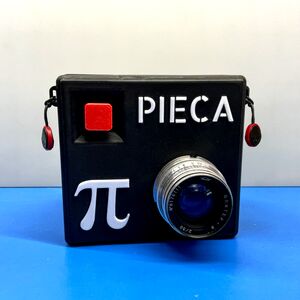
Pieca: A Raspberry Pi Camera System for Leica M Mount Lenses
"Taking pictures and geeking out over cameras was one of my first hobbies starting with an old Olympus point and shoot, I then moved up to a DSLR upgrading as new and exciting technology became accessible to my summer job budget. I then got the opportunity to buy a Leica M8 and was immediately hooked on the rangefinder system and manual lenses. But being an engineer I always wanted to build my own camera. This camera project is a culmination of countless hours of learning to code in various languages, design 3D parts, print them successfully, build basic electronic circuits, use optical elements, and solve complex problems in general. So without further ado, I introduce the Pieca Camera System! Based on the venerable Raspberry Pi4 and the High-Quality image sensor module it incorporates a 5-in touch screen with a live view and full manual controls." [...]
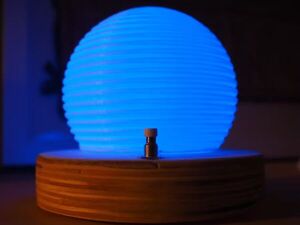
DIY Neon Mood Lamp
"Make your own neon mood lamp, follow this easy tutorial. Feel free to download the 3d print file in the youtube description. This neon ambient lamp was made as a small desk lamp controlled with a button. " [...]

Wooden RPN Calculator
"A RPN (Reverse Polish Notation) calculator of billet walnut case. There are multi-functional RPN calculators with numbers of small keys. However, daily use RPN calculators with large and light touch buttons are rare. So I made it by my own. This calculator also has trigonometric, logarithmic and exponential functions. It is hidden but appears on the LCD as function key style by pressing the silver key (or long press of keys)." [...]

OpenCV Oil Tank Gauge Reader with Home Assistant Integration
"A non-invasive reader for heating oil tank gauges, based on Raspberry Pi, OpenCV, and Home Assistant. Introduction Welcome to the OpenCV Tank Gauge Reader project. This project aims to provide the necessary elements to build a non-invasive fuel oil tank gauge reader using standard off-the-shelf parts and some easy 3D prints. With built-in Home Assistant integration, it's easy to view the level of your tank from your smartphone, or receive notifications when your tank is low. This project is the original work of Steve Richardson ([email protected]), and is released under the MIT License. It's intended to be useful, educational, and fun." [...]

Custom 16x16 WS2812 Mini Matrix Project
"Made a custom Matrix board that can be controlled via any MCU. 256 RGB LEDs are arranged in a 16x16 grid, WS2812 Addressable LEDs were used so no LED Driver or complex multiplexing circuit has been added to this board. As for the Layout, all the LEDs are laid out in an OXPLOW layout, OXPLOW is a matrix type in which LEDs go one way in one row, and then backward in the next row, and so on, this layout is also called boustrophedon. Material Required Following are the materials required in this built- - WS2812B 3535 LEDs - Solder Paste - Arduino Nano Board - Custom PCB - Stencil - Jumper wires and breadboard WS2812B 3535 Package WS2812B is an intelligent control LED light source that the control circuit and RGB chips, but they usually come in the 5050 Package. There also exists a 2020 Package and a 3535 package WS2812B 3535 that is being used in this project works the same as the 5050 Version, the only difference is the size and Flux of Light. The data transfer protocol uses a single NZR communication mode." [...]
Secção Videos
Videos interessantes.
That's all Folks!



